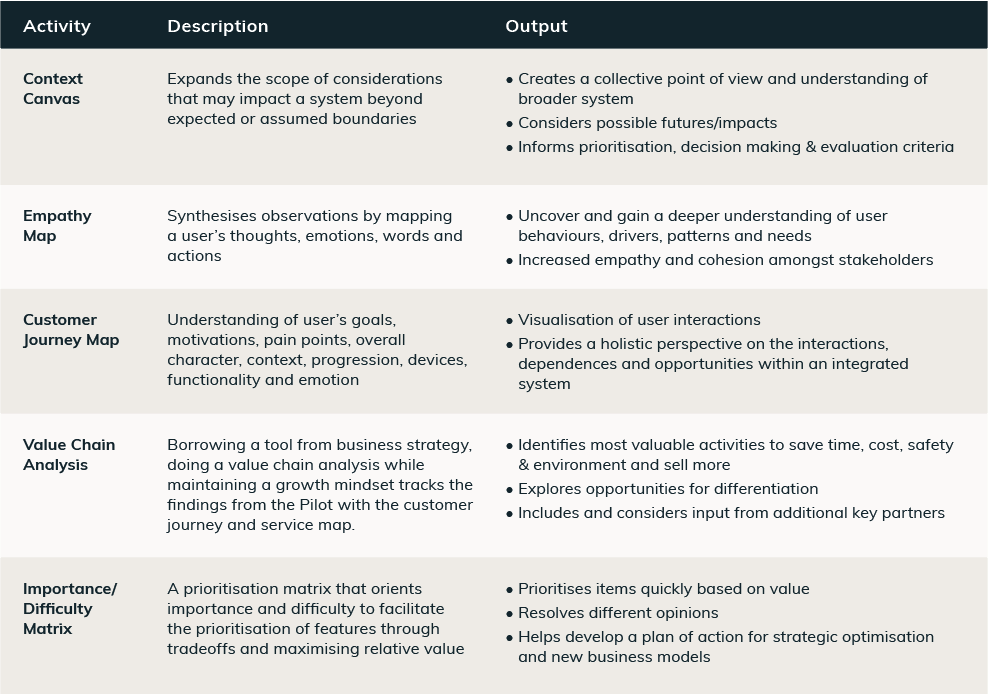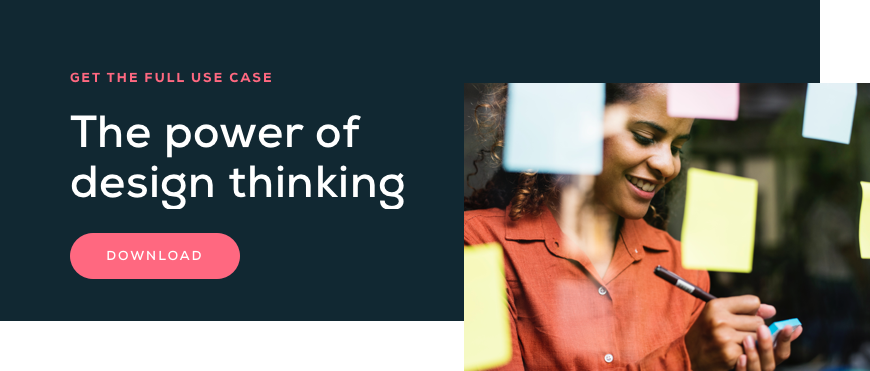Design thinking is a solutions-based approach to addressing big problems. It is an iterative process that encourages businesses to focus on customers and their problems when designing new products and services. Due to its emphasis on group thinking, understanding users, challenging assumptions and redefining problems, design thinking often helps businesses identify strategies and solutions that might not be instantly apparent.
At Cognition, we specialise in applying design thinking to solve problems through technology and digital transformation. We’ve applied our design thinking expertise to over 70 engagements and have helped a broad range of businesses from different industries accelerate their digital transformation journey.
Our methodology draws on design thinking, customer experience design and agile methods. It is a circular and iterative processes to allow for the continual refinement and technological advances that are at the core of digital transformation.
Our team of specialists and experts has applied our design thinking methodology and framework to help a diverse range of businesses address some of their most critical challenges, including:
- How should we go about implementing our digital strategy? Where do we start?
- How can we modernise our ageing infrastructure and applications – without disrupting the existing business?
- How can we differentiate our products and services, outperform our competition or create new ways of doing things without failing?
- How can we streamline our business to reduce cost and improve operational performance to be more price competitive and more resilient to threats of new market entrants?
Our design thinking workshops are designed to help businesses address challenges like these and other business-critical problems.
Every workshop we run is tailored to the individual customer and their problems and goals. However, all of them are based on our proven methodology, which has five phases that span the whole digital transformation lifecycle. In total, we have over 60 design thinking methods and activities at our disposal to tailor a workshop to almost any business problem or design challenge.

Design thinking is a proven process that has been studied and applied by many organisations and experts. There are numerous resources available that teach leaders and teams how to run design thinking projects. However, while you might be able to apply design thinking on your own, there are several critical benefits of having an expert like Cognition involved.
We have worked on over 70 design thinking projects with a wide range of businesses.
We are not burdened with legacy knowledge about your business. We bring a fresh perspective, can transfer ideas from other industries and might see things you’ve missed.
We bring a team of experts with skills and experiences in different areas to the table.
We ensure you work through the process in an efficient and meaningful way without cutting corners.
Here are two examples of how we have helped innovative businesses solve big problems through design thinking.
A large automotive company, specialising in leasing and financing solutions for businesses, came to us with a very specific problem; How can we make the process of calculating fringe benefits tax (FBT) for our fleet of over 40,000 vehicles more efficient?
The business wanted to move away from a manual, paper-based system of recording mileage to a more efficient digital solution. Through our design thinking process, we helped them not only identify a mobile app as the best solution but also helped define details of the solution and implementation – both critical to the success of the initiative.
As a result, the business now not only has a simple way of tracking mileage and calculating FBT, but has also been able to realise some additional unintended benefits such as the ability to compare fuel usage and service needs of different vehicles and drivers, as well as tracking driver performance, such as percentage of time drivers are exceeding the speed limit. While those insights did not add direct value to their own business, working through the design thinking process highlighted that they would potentially be valuable to their customers, giving them a competitive edge and increasing customer loyalty.
An Australian healthcare provider with over 500,000 members wanted a better way to engage with their members and, in particular, make it easier to make appointments and then be reminded before and on the day, to reduce the high no-show rate.
A related overseas organisation in a similar market had developed a mobile app solution to this problem, so the healthcare provider’s initial suggestion was to simply recreate what they had done. However, working through the design thinking process with Cognition, they realised that there were some unique differences between the overseas market and Australia.
Through the process, we were able to identify the specific local needs and obstacles, and design a solution that would resonate more strongly with their members. The resulting solution, a customer-facing mobile app, was a big success - much more so than a direct copy of the overseas organisation’s app would have likely been.

Learn more about how we apply both left and right brain methods to help you design, make and optimise your digital experience.
